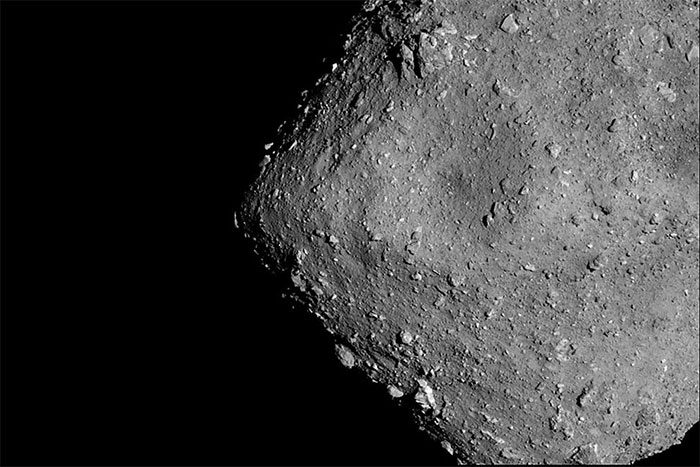Using samples collected from the asteroid Ryugu, a team of researchers from JAXA has been able to calculate what would happen if it were to collide with Earth.
Scientists have calculated the potential outcomes of a collision involving asteroid Ryugu. They can predict the results of such an impact by analyzing samples brought back by the Hayabusa2 spacecraft from the Japan Aerospace Exploration Agency (JAXA). Presenting their calculations at the 8th Planetary Defense Conference in Vienna, Austria on April 4, Professor Satoshi Tanaka from JAXA’s Solar System Science Division emphasized the importance of predictions in the effort to protect Earth from asteroids like Ryugu.

Currently, Ryugu will not come within 100,000 km of Earth.
Launched in December 2014, the Hayabusa2 spacecraft reached Ryugu, a 900-meter-wide asteroid located 300 million kilometers from Earth, in June 2018 after a 42-month journey. In addition to collecting samples and returning them to Earth in 2020, Hayabusa2 also fired two projectiles at the celestial body. “The Hayabusa2 successfully conducted an experiment firing two one-kilogram projectiles at a speed of 2 km/s, creating a crater with a diameter of 20 meters. The adhesive force of the rock layer is very low. The density of the rock is only slightly higher than that of water, with very high porosity,” Tanaka stated.
Researchers currently estimate that Ryugu will not come closer to Earth than 100,000 km. Based on the data, Ryugu is considered a rubble pile asteroid with lower mechanical strength than ordinary rock. This means that if the asteroid were to head towards Earth, scientists would need to prevent it from breaking into multiple pieces using methods similar to those used by the DART spacecraft when it collided with the Dimorphos celestial body in September 2022.
Tanaka explained that in the absence of deflection measures, if asteroid Ryugu were to pass through Earth’s atmosphere at a 45-degree angle and a speed of about 61,000 km/h (17 km/s), this rubble pile asteroid would break apart at an altitude of about 35 – 40 km, leading to an airburst similar to the event in Russia in February 2023, when the Chelyabinsk meteor exploded 30 km above the ground. As a result, the Chelyabinsk explosion produced a blinding flash and energy equivalent to 400 – 500 kilotons of TNT, which is 33 times the energy released by the atomic bomb that destroyed Hiroshima at the end of World War II.
The Chelyabinsk explosion caused nearly 1,500 injuries due to the amount of debris it generated. With a diameter of 20 m, the Chelyabinsk meteor was the largest space object to enter Earth’s atmosphere since 1908, but it is just a tiny fraction compared to Ryugu.
Tanaka pointed out that if Ryugu were to break apart in Earth’s atmosphere, we currently do not know the exact tensile strength of the asteroid to predict the size of the debris that would fall to the ground. He and his colleagues are completing preliminary analyses with the samples returned to Earth. Exploring the internal structure is crucial for a more accurate assessment of the impact that asteroids like Ryugu may have on Earth in the future.


















































